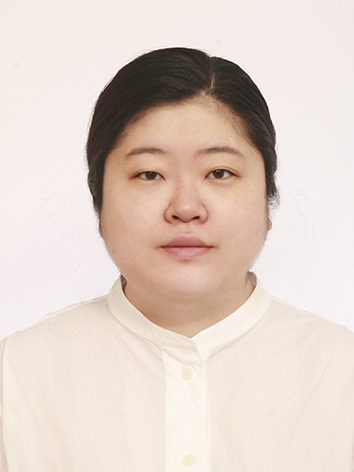Japanese mines registered with Unesco after Seoul, Tokyo agree on history descriptions
Published: 28 Jul. 2024, 14:01
Updated: 28 Jul. 2024, 18:32
-

- LIM JEONG-WON
- lim.jeongwon@joongang.co.kr
![The entrance to the Sado mine site in Aikawa, Japan, on Saturday. The Sado mines were registered as a Unesco World Heritage Site on the same day. [YONHAP]](https://koreajoongangdaily.joins.com/data/photo/2024/07/28/89f5319b-5bb7-45cc-aa6c-1e6d843d4b08.jpg)
The entrance to the Sado mine site in Aikawa, Japan, on Saturday. The Sado mines were registered as a Unesco World Heritage Site on the same day. [YONHAP]
The Sado mines, a site associated with the large-scale forced labor of Koreans during Japan's 1910-45 colonial rule of Korea, was registered as a Unesco World Heritage site Saturday.
The decision was made by consensus during the 46th Unesco World Heritage Committee meeting, held on Saturday in New Delhi, India after the Korean and Japanese governments reached a tentative agreement for the registration the day before.
The Korean government on Friday agreed to the registration decision as Japan accepted the condition that it “reflect the entire history” by installing exhibits introducing the Korean workers at the site.
“Keeping in mind all relevant World Heritage Committee decisions and Japan’s commitments in this regard, we will sincerely commemorate all the workers of the Sado mines, especially those from the Korean Peninsula,” said Takehiro Kano, ambassador of Japan to Unesco, at the meeting Saturday. “To demonstrate its willingness to amicably resolve the differences between Korea and Japan over the Sado mine, Japan has already installed new exhibit materials and interpretive and display facilities at the site that describe all the workers, their working conditions and hardships.”
Kano’s remarks were included as a footnote in the World Heritage Committee’s decision and are considered part of the decision itself.
The newly installed exhibits by Japan are located at the Aikawa Folk Museum in Kitazawa, about 2 kilometers (1.24 miles) from the Sado mine or a five-minute drive by car.
On the second floor of the museum, a section dedicated to explaining the harsh working conditions of Korean workers in the Sado mine is provided, and related documents are displayed.
There are also English and Japanese panels describing the harsh conditions of Korean workers. The descriptions include the fact that more than 1,000 Korean workers were in the mine after the introduction of national conscription, the involvement of colonial authorities in the recruitment of the workers, the fact that more Korean workers were involved in dangerous tasks such as rock drilling than Japanese workers, and the fact that Korean workers worked an average of 28 days per month.
The exhibition facility will be open to the public from Sunday. The space will be introduced as a separate section in the local museum's brochure, and a sign will also be installed at the site of the Korean laborers' dormitory.
Japan plans to hold an annual memorial service for the Sado mine workers on Sado Island, attended by central and local government officials. The first event will be held as early as September this year.
Japan's move came after negotiations with Korea.
The International Council on Monuments and Sites (Icomos), an advisory body to Unesco, recommended withholding the Sado mines' designation in June and advised Tokyo to display the entire history on site.
An official from Seoul’s Foreign Ministry explained Friday that the government had agreed to register the Sado mines because “Japan promised to reflect the whole history” and “has already taken practical measures.”
In 2015, Japan registered Hashima Island, or the "Battleship Island" — another site linked to the forced labor of Koreans in Nagasaki Prefecture — along with six other sites as Unesco World Heritage, promising to detail its history of forced labor. Despite the promise, Japan set up an information center in Tokyo, not Nagasaki, highlighting only the achievements of its industrial revolution.
“We did not just receive a promise of implementation from Japan; we agreed on the specifics and prompted practical measures,” the official said.
“Japan's actions related to the listing are the result of the Korean government's efforts to resolve the issues through an agreement with Japan based on lessons learned from Japan's 2015 listing of Hashima Island, including delays in establishing the center and inadequacies in the exhibition's location and content,” the Foreign Ministry said in a statement Saturday.
However, it remains to be seen how much the fact that many Koreans were forced into labor will be highlighted in the exhibit or during the memorial ceremony.
Korea’s Foreign Minister Cho Tae-yul urged Japan to take “sincere follow-up measures” regarding registering the Sado mines during the Asean Plus Three foreign ministers’ meeting in Vientiane, Laos, on Saturday.
“We expect Japan to continue to show its sincerity by communicating closely with our government in implementing related follow-up measures such as the memorial ceremony and the exhibits already installed at the site to clearly demonstrate its commitment to fulfilling its promise,” Cho told reporters.
Regarding the background of Korea’s agreement to inscribe the Sado mine as a World Heritage Site, Cho said it was “the result of the Korean government’s persistent efforts to resolve the issue through mutual agreement rather than confrontation with Japan based on the lessons of 2015.”
BY LIM JEONG-WON, SEO JI-EUN [lim.jeongwon@joongang.co.kr]










with the Korea JoongAng Daily
To write comments, please log in to one of the accounts.
Standards Board Policy (0/250자)